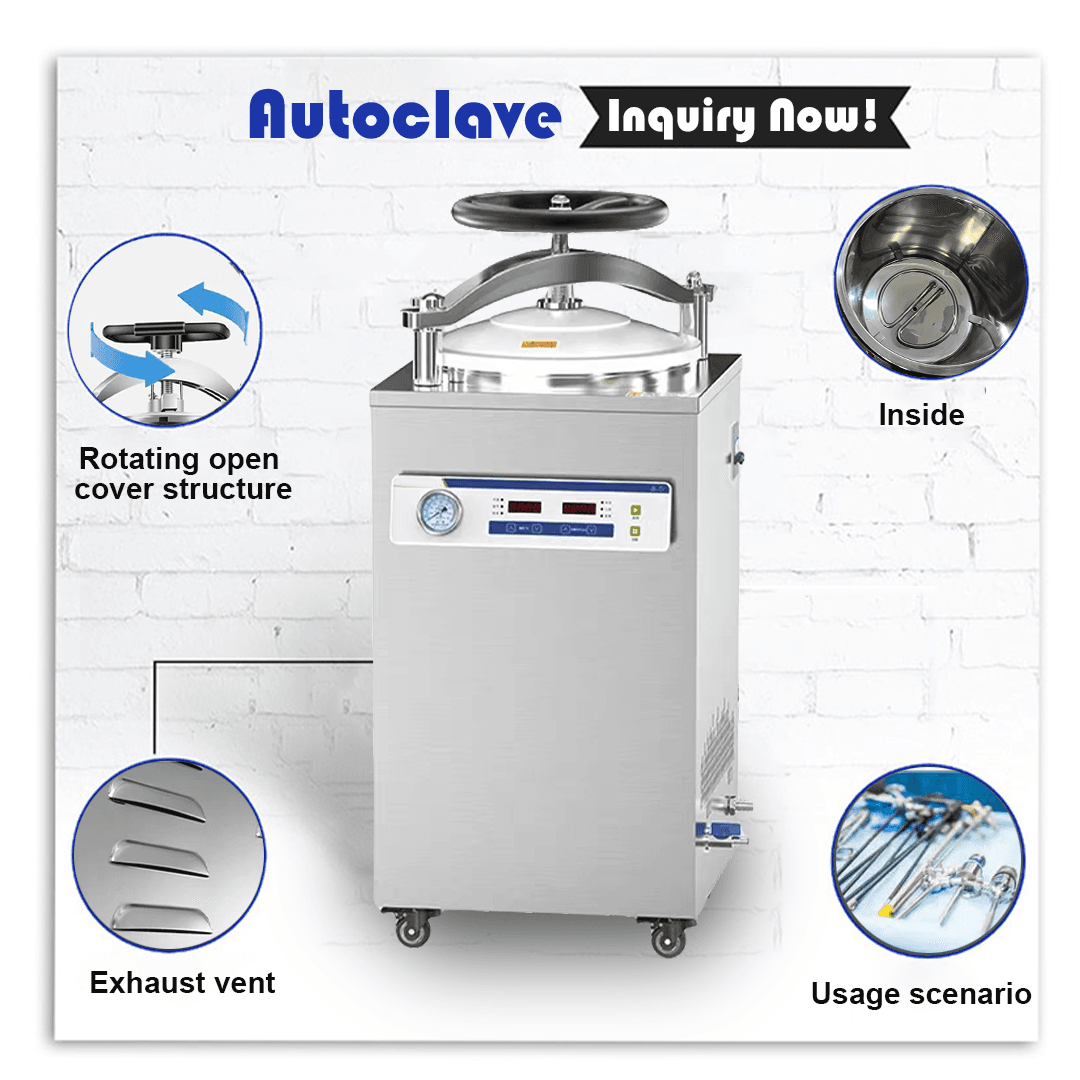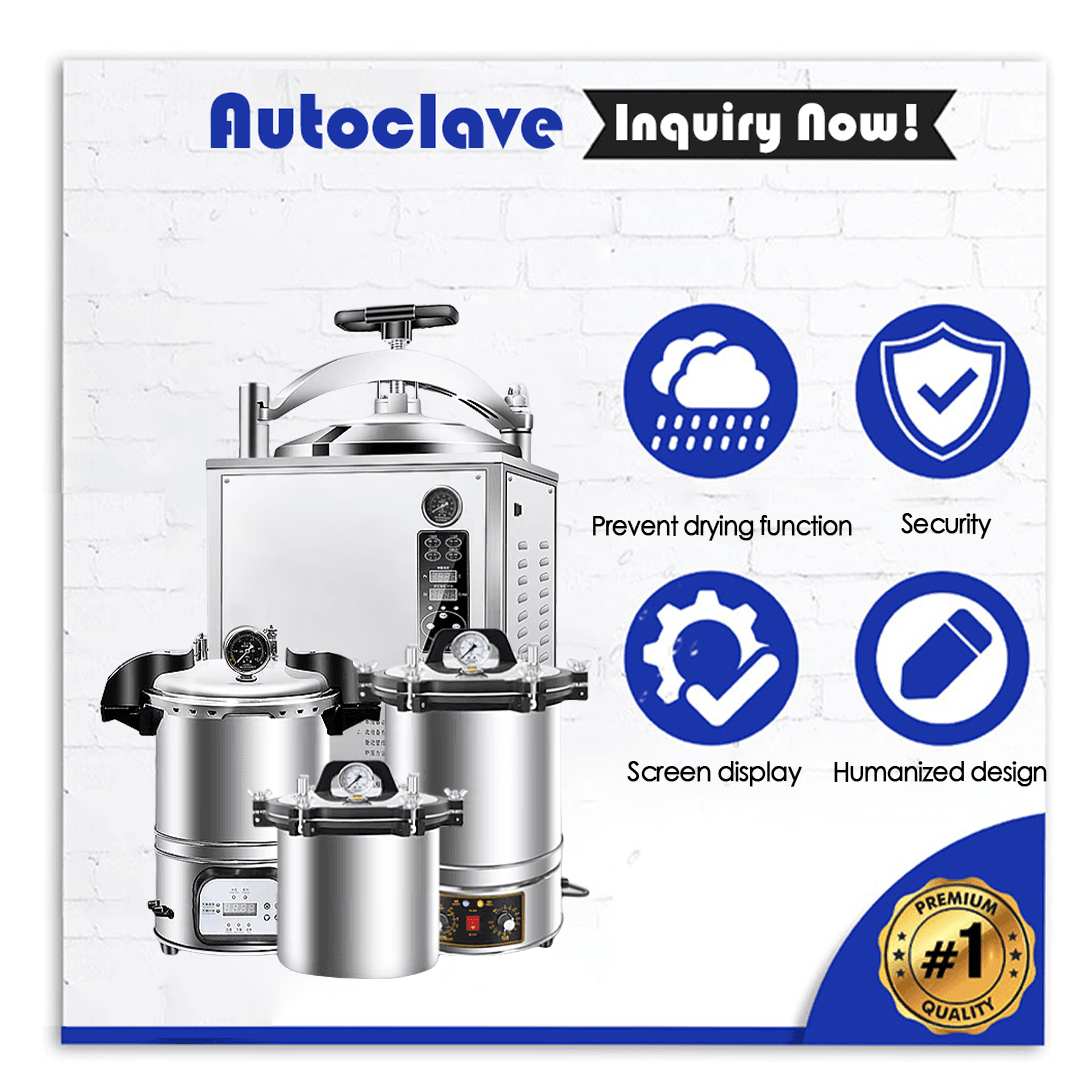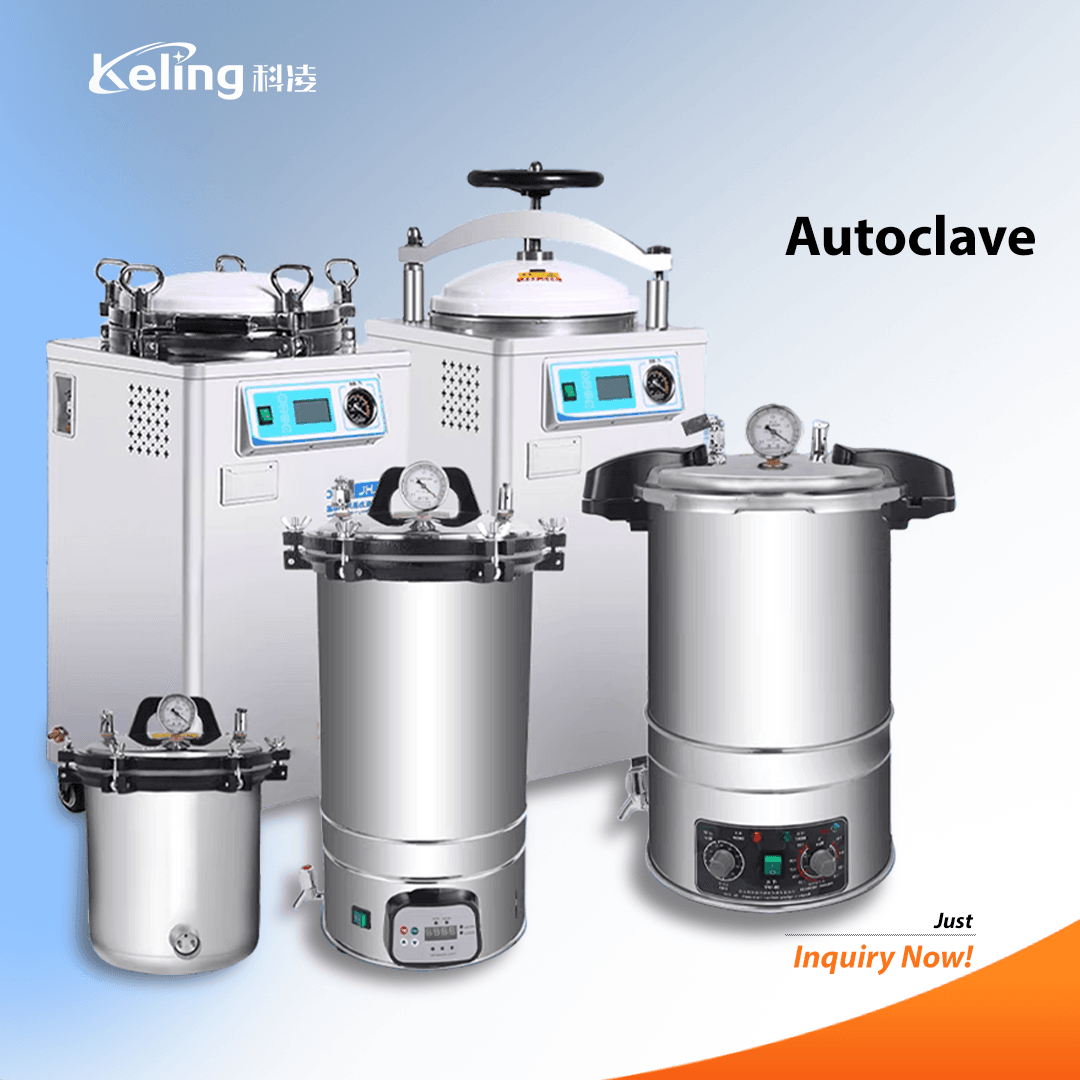
These two autoclave types show substantial differences in their design and capacity which influence their applications so understanding these distinctions is essential before purchasing. The guide offers comprehensive analysis of horizontal and vertical autoclaves including their applications, benefits and drawbacks and pricing variations to assist you in selecting the best sterilization solution.
Vertical autoclaves feature an upright configuration which makes them perfect for environments with restricted floor space.
The cylindrical chamber of the autoclave features a top-opening design.
The vertical design of these autoclaves enables them to operate in confined spaces which makes them appropriate for use in laboratories and clinics.
These autoclaves have a typical volume range of 25 to 100 liters.
The autoclave can function in three modes including manual operation as well as semi-automatic and fully automatic alternatives.
Horizontal autoclaves provide high-volume sterilization capacity through their larger design.
The autoclave chamber features a cylindrical or rectangular shape which opens laterally.
The size of horizontal autoclaves demands more space which makes them appropriate for both hospitals and industrial settings.
Capacity: Larger chambers, often exceeding 100 liters.
The operation mode is typically fully automatic and includes advanced functions to manage bulk sterilization processes.
Vertical autoclaves are ideal for:
Vertical autoclaves work well for clinics and labs that require minimal sterilization capacity.
Facilities that need to make efficient use of limited space should use compactly designed autoclaves.
Sterilizing smaller instruments and materials.
Horizontal autoclaves are better suited for:
Medical facilities pharmaceutical companies and research institutions requiring substantial sterilization capabilities rely on horizontal autoclaves.
Horizontal autoclaves enable the efficient sterilization of large instruments along with surgical tools and industrial materials.
Environments where speed and efficiency are critical.
The lower price of vertical autoclaves stems from their reduced size and simpler structure.
Entry-Level Models: $500–$1,500
Mid-Range Models: $1,500–$5,000
High-End Models: $5,000 and above
The increased cost of horizontal autoclaves stems from their higher capacity and more sophisticated features along with a durable construction.
Entry-Level Models: $3,000–$8,000
Mid-Range Models: $8,000–$20,000
High-End Models: $20,000 and above
Compact and space-saving design.
Affordable for smaller facilities.
Easy to install and operate.
Limited capacity, unsuitable for bulk sterilization.
Peut manquer de fonctions d'automatisation avancées.
Large capacity for bulk sterilization.
Advanced features for efficient and automated operation.
Suitable for high-demand environments.
Coût initial plus élevé.
Requires more space for installation.
Choosing between a horizontal and vertical autoclave depends on your sterilization needs, available space, and budget. Vertical autoclaves are ideal for smaller facilities with limited space and sterilization demands, while horizontal autoclaves are better suited for large-scale operations requiring high capacity and advanced features.
For more insights into autoclave technology, check out our related articles:
The primary difference lies in their design and capacity. Vertical autoclaves are compact and open from the top, while horizontal autoclaves are larger and open from the side.
Vertical autoclaves are generally more affordable due to their smaller size and simpler design.
Yes, horizontal autoclaves can handle small tasks, but they are more cost-effective for bulk sterilization due to their larger capacity.
Vertical autoclaves are suitable for smaller hospital departments, but larger departments often require horizontal autoclaves for bulk sterilization.
Consider your sterilization volume, available space, and budget. Vertical autoclaves are best for compact spaces and smaller loads, while horizontal autoclaves are ideal for large-scale operations.
For inquiries or assistance in choosing the right autoclave for your needs, contact us:
Courriel : inquiry@shkeling.com
WhatsApp : +8618221822482
Site web : https://autoclaveequipment.com/
Laissez-nous vous aider à trouver la solution de stérilisation idéale pour votre établissement !

Les autoclaves sont des dispositifs essentiels dans les milieux médicaux, car ils maintiennent la sécurité et la stérilité des instruments. Les revendeurs d'équipements médicaux, les distributeurs et les spécialistes de l'approvisionnement doivent comprendre les exigences en matière d'entretien des autoclaves afin de maintenir la sécurité et la stérilité des instruments.

Le secteur de la santé exige que les équipements de stérilisation restent fiables et sûrs à tout moment. Les revendeurs d'équipements médicaux et les spécialistes de l'approvisionnement doivent maintenir les autoclaves en parfait état, car cela a une incidence sur le fonctionnement de l'entreprise.

Les équipements de stérilisation doivent fonctionner correctement dans les établissements de santé afin de protéger les patients contre les infections et de maintenir les normes de sécurité. Les revendeurs d'équipements médicaux, les distributeurs et les spécialistes de l'approvisionnement doivent maintenir les autoclaves en excellent état de fonctionnement.

Des normes d'hygiène élevées sont essentielles dans le domaine de la beauté et des soins personnels, car elles protègent les clients et la réputation des entreprises. Les fournisseurs d'équipements médicaux et les acheteurs spécialisés dans l'approvisionnement trouvent

L'industrie de la beauté et des soins personnels exige des pratiques d'hygiène strictes pour protéger les clients tout en renforçant leur confiance. Les fournisseurs d'équipements médicaux et les spécialistes de l'approvisionnement voient dans la fourniture de stérilisateurs autoclaves aux salons de manucure

L'industrie de la beauté et des soins personnels dépend de pratiques d'hygiène strictes pour protéger les clients et établir une relation de confiance avec eux. Les revendeurs d'équipements médicaux, les distributeurs et les spécialistes de l'approvisionnement peuvent tirer parti d'un marché de la santé et de la sécurité.